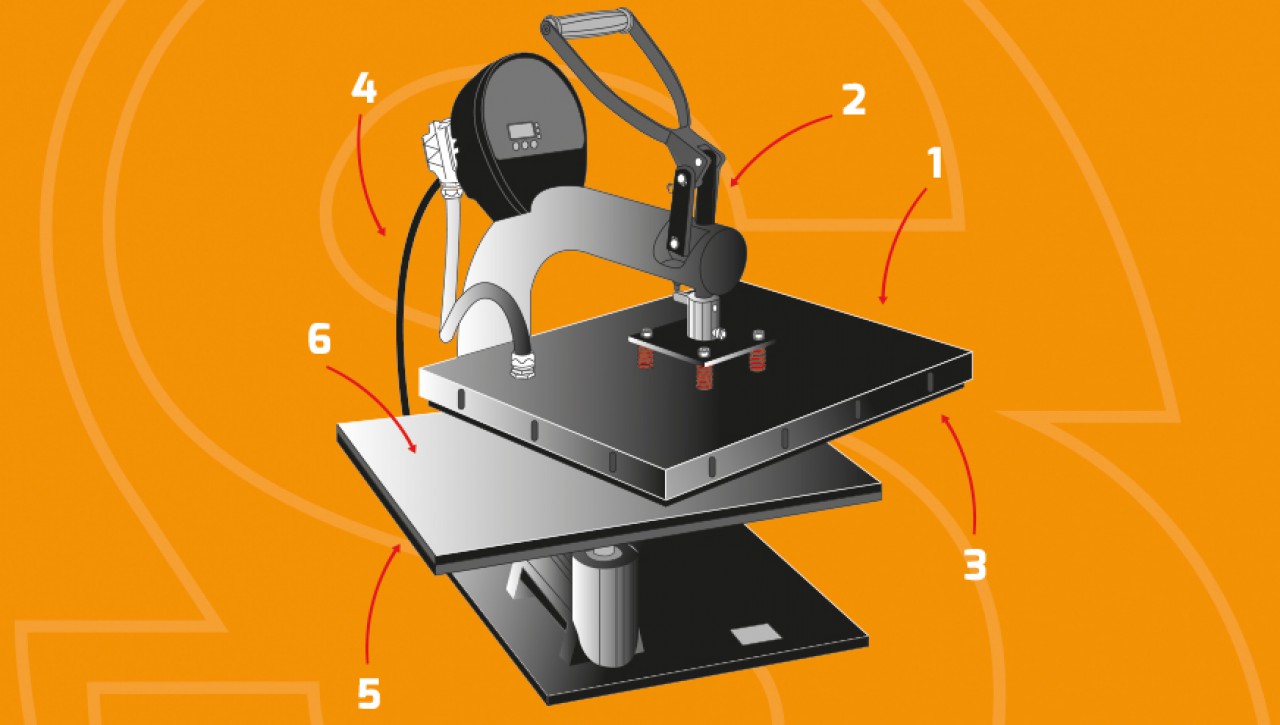Dye Sublimation Heat Press Maintenance: When is 400° REALLY 400°?

You depend on that device to always tell the truth but does it?
When most heat presses come from the factory, they are set so the readout is accurate no matter what temperature you set it at but don’t assume that is always accurate. The truth is, that temperature readout device is tested and set by a person and people sometimes make mistakes. Even more so, presses can, over time, change. These are, after all, just machines and like all machines, they occasionally need their vitals taken, a shot of oil here and there and an all-round check-up.
Perhaps the most important item that is given the least amount of attention is the temperature readout. When your heat press reads 400, how hot is it really? I have seen presses drift as much as 100 degrees up or down from what the readout says it is. Now a few degrees, even 10 or 15 degrees will make little difference in most products but wider variations will make a huge difference in the quality and consistency of your work.
Over the years, I have tried a dozen of ways to get an accurate reading from a 400° press and it ain’t as easy as it sounds. For years, my best method was to use an infrared digital thermometer but I knew that wasn’t giving accurate readings – I still don’t understand why not but it was clear that that method wasn’t good enough to get the accurate readings I wanted.
Another method was to use a heating/air-conditioning thermometer, you know, the ones made like candy thermometers with a metal tube with a dial on top. If I placed that on the stage of the press with the dial sticking out, and closed the press, I could get a fairly accurate reading but even then, I would have to take several readings and average them together. I wanted something better and so did everyone else.
After all, if your press isn’t heating to the same temperature every time you set it or if your readout is saying one thing and the press is actually something else, you are going to have problems. I once had a guy in Canada tell me he could make a perfect FRP name badge in 20 seconds while it took me a full minute to do the same job. His press was so “fast”, in fact, he had trouble controlling it. Items that normally required only 20-30 seconds were just burning up. I suggested his press was too hot but he assured me the temperature was accurate and his press was just faster than anyone else's.
Now, I never got to take a reading on that press but there is no question in my mind; his press was 100 or so degrees too hot. Sure, the readout said 400 but it wasn’t calibrated accurately.
READOUTS MUST BE CALIBRATED BEFORE THEY WILL BE ACCURATE.
Now, if the factory does this and does it correctly, you’re set to go and we usually assume that to be the case but…
In my own case, I have one press that when tested accurately, was 35° too hot. It isn’t a huge amount but it made my times vary from one press to another (I have two presses in my shop). What worked on one press didn’t work on the other.
Isn’t 400° the same on both sides of the room?
Apparently not.
When I discovered an accurate way to read the temperature of a flatbed heat press, that all changed. Now, I can do the same job on either press and it looks the same, takes the same amount of time and is always consistent no matter which press I use or how long a period of time passes between jobs.
The bad news? This isn’t going to be free.
The good news? An accurate measuring device costs less than $85 and is available from Conde or George Knight, a heat press manufacturer. The device is referred to as a digital contact thermometer or pyrometer. It comes with a special surface probe (called a thermo-couple) that is pressed against the surface of a heat platen to obtain a more accurate reading.
By adjusting the temperature being called for by the heat press until you get a consistent 400° reading at the center of the heating platen, you can then re-calibrate the readout on your press. Instructions on how to do that on Geo Knight presses are included in the instructions.
There is no way anyone can produce quality-sublimated products with any consistency if they don’t have an accurate readout on their heat press. Over the years, I have helped solve many a sublimation problem by adjusting the temperature of a heat press up or down 10, 20, 30 or more degrees.
For years, it was just a guessing game when a press went out of calibration. Now, presses can not only be fixed but maintained to reflect highly accurate temperatures and boy, am I glad. Best $85 bucks I ever spent.
Have questions?
Contact your Conde representative. They will be happy to help you and if they can’t, they will refer you to the person who can.
